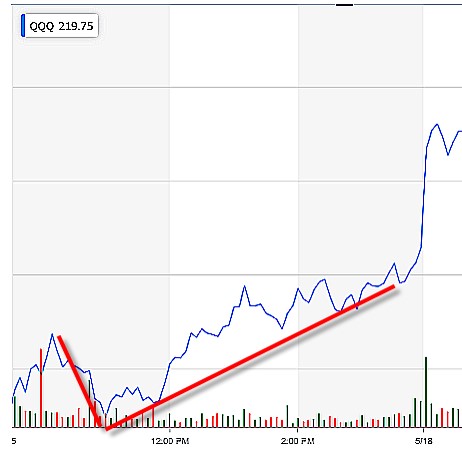Exit strategies for covered call-writing are critical components to our overall success. One of the strategies available to us is hitting a double, explains Alan Ellman of The Blue Collar Investor.
This is where we buy back the short call and wait for the stock price to recover allowing us to re-sell the same option. This creates two income streams in the same contract month with the same stock and cash investment. Because of time-value erosion (theta), the opportunities for hitting a double are usually reserved for early-to-mid-contract time frames.
In certain volatile market conditions, hitting a double opportunity may expand to later in a contract. This article will highlight a situation where I hit a double on the last day of the May 2020 contracts using the exchange-traded fund Invesco QQQ Trust (QQQ). The market volatility was a result of the coronavirus crisis.
QQQ Trades During the May 2020 Contracts
- 4/20/2020: Buy 100 x QQQ at $215.50
- 4/20/2020: Sell-to-open (STO) 1 x May 2020 $220.00 call at $5.70
- 4/20/2020: Place a buy-to-close (BTC) limit order to close the short call at $1.15 (20% guideline)
- 5/3/2020: Change the BTC limit order from $1.15 to $0.60 (20% guideline changed to the 10% guideline mid-contract)
- 5/15/2020: BTC the short call at $0.60
- 5/15/2020: STO the May 2020 $220.00 call at $1.54
On 5/15/2020, a double was achieved resulting in a net option credit of $94.00 per contract [($1.54 – $0.60) x 100].
Broker Statement Showing the Hitting a Double Trade

“Hitting a Double” with QQQ
By setting the BTC limit order, I was able to take advantage of the early day dip and late afternoon price recovery. This additional cash profit was the result of preparation and opportunity.
Price Chart on 5/15/2020 Depicting the Hitting a Double Classic V-Shaped Pattern

“Hitting a Double” Classic V-Shaped Chart Pattern
Discussion
Position management is the third of the three-required skills (stock selection and option selection are the first two). BTC limit orders can be placed immediately after entering a covered-call trade based on the 20%/10% guidelines. These opportunities can arise at any time during a contract as we must have a plan in place for every possibility prior to entering our trades.
Learn more about Alan Ellman on the Blue Collar Investor Website.


















